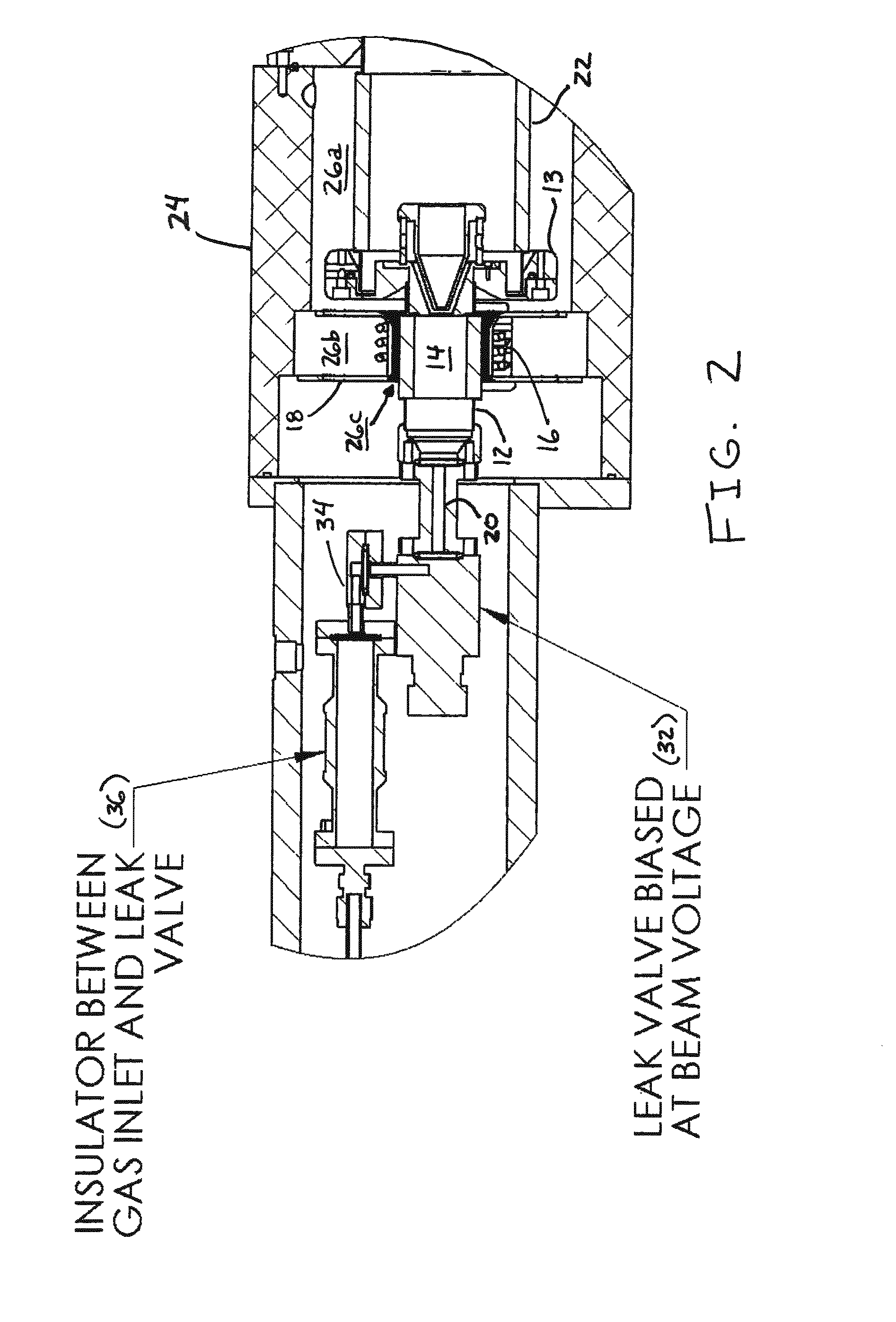High voltage isolation and cooling for an inductively coupled plasma ion source
a plasma ion source and high voltage isolation technology, applied in the field of plasma ion sources, can solve the problems of limiting the usefulness of removing volumes with dimensions exceeding 10 m, spherical aberration, and spherical aberration, and achieve the effect of efficient transfer of hea
- Summary
- Abstract
- Description
- Claims
- Application Information
AI Technical Summary
Benefits of technology
Problems solved by technology
Method used
Image
Examples
Embodiment Construction
[0018]The inductively coupled plasma source includes a ceramic tube 10, enclosing the plasma chamber 14, welded between a first upstream metal flange 12 and a second downsteam vacuum flange 13. Windings of an RF antenna 16 are wrapped around, but electrically isolated (e.g. slightly spaced) from, the cylindrical outer walls of ceramic tube 10. As will be further appreciated through the description below, RF antenna 16 is further electrically isolated from the cylindrical outer walls of the ceramic tube 10 by filling of the space between them with a dielectric fluid. A split Faraday shield 18 surrounds the cylindrical outer walls of ceramic tube 10 and is interposed between the RF antenna 16 and the ceramic tube 10. Shield 18 includes a plurality of slits through the wall of the shield 18 facing the ceramic tube 10, with a space between the shield 18 and tube 10 being filled with the dielectric fluid.
[0019]A gas inlet 20 communicates with an upstream opening A in the plasma chamber 1...
PUM
| Property | Measurement | Unit |
|---|---|---|
| dielectric strength | aaaaa | aaaaa |
| dielectric constant | aaaaa | aaaaa |
| dielectric constant | aaaaa | aaaaa |
Abstract
Description
Claims
Application Information
 Login to View More
Login to View More - R&D
- Intellectual Property
- Life Sciences
- Materials
- Tech Scout
- Unparalleled Data Quality
- Higher Quality Content
- 60% Fewer Hallucinations
Browse by: Latest US Patents, China's latest patents, Technical Efficacy Thesaurus, Application Domain, Technology Topic, Popular Technical Reports.
© 2025 PatSnap. All rights reserved.Legal|Privacy policy|Modern Slavery Act Transparency Statement|Sitemap|About US| Contact US: help@patsnap.com



